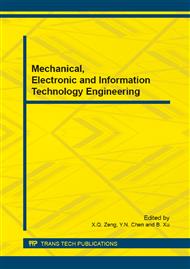p.365
p.373
p.379
p.385
p.390
p.395
p.399
p.403
p.407
A New Method for Decision Tree Based Discernibility Matrix and Degree of Consistent Dependence
Abstract:
Rough set theory is a popular mathematical knowledge to resolve problems which are vagueness and uncertainly. And it has been used of solving the redundancy of attribute and data. Decision tree has been widely used in data mining techniques, because it is efficient, fast and easy to be understood in terms of data classification. There are many approaches have been used to generate a decision tree. In this paper, a novel and effective algorithm is introduced for decision tree. This algorithm is based on the core of discernibility matrix on rough set theory and the degree of consistent dependence. This algorithm is to improve the decision tree on node selection. This approach reduces the time complexity of the decision tree production and space complexity compared with ID3.In the end of the article, there is an example of the algorithm can exhibit superiority.
Info:
Periodical:
Pages:
390-394
Citation:
Online since:
March 2015
Authors:
Keywords:
Price:
Сopyright:
© 2015 Trans Tech Publications Ltd. All Rights Reserved
Share:
Citation:


